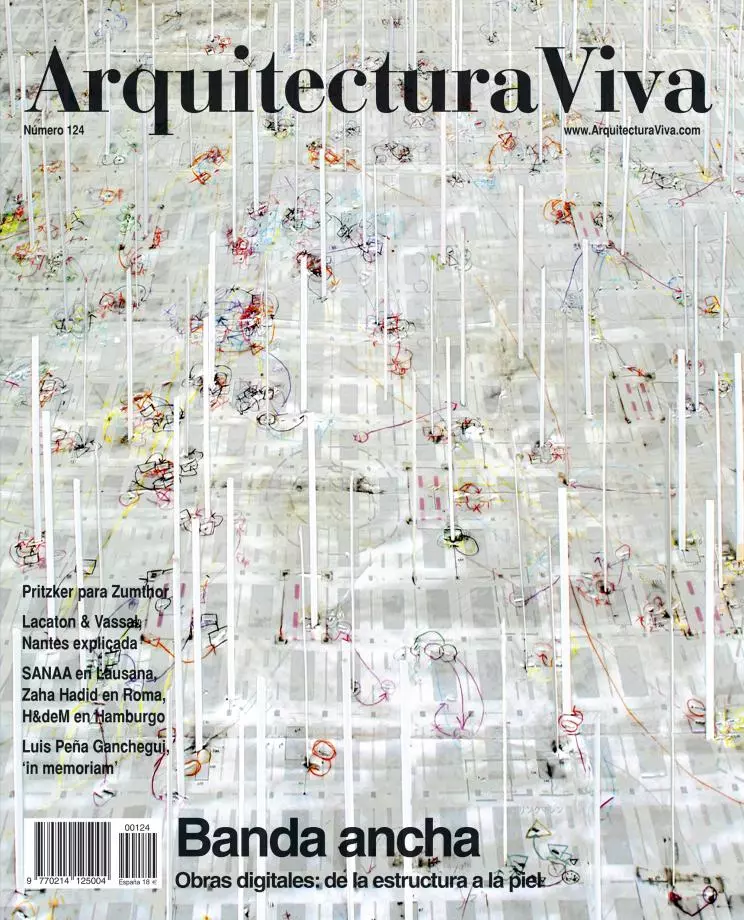
I cannot feign familiarity with the digital revolution. In fact, I wonder whether I really understand what we are talking about. I belong to a generation that used Fortran language in the sixties, when to run a simple program it was necessary to reserve time on the computer, which was back then a huge machine that took up several cabinets in a climate-controlled room, and our interface stationery were punched cards and endless folds of striped paper sheets. When these magazines were launched in the eighties, we had no computers in the office, the production process was based on very traditional analogical methods, and the world wide web did not exist yet. Now that the AV/Arquitectura Viva project steps into its twenty-fifth year, fourteen of them on the Internet, it seems appropriate to take this anniversary as an opportunity to examine in detail a range of technical developments that are changing architecture as much as our own lives.
It is redundant to reiterate that computer-assisted design has altered the conception of architecture in the same way as perspective did in the Renaissance, and furthermore it must be added that these new computer tools nowadays allow building forms of unprecedented complexity, which indeed causes the predictable anxiety in those of us educated in the sober discipline of the drafting machine or the humble parallel ruler, not to mention the set squares and compasses box. Inevitably obsolete, we look upon what is known as parametric design with the same fascination and distrust we would feel if face to face with a wild animal. The tameless volumes that today inhabit competition panels before they find their place in the motley pages of AV Proyectos are probably an eloquent example of this unstoppable growth of formal proposals, morbid perhaps like a fatal viral infection, and effervescently speculative like a tulip fever.
For its part, the extraordinary phenomenon of the web, which has created in fact the infinite library of Borges, grants us at once a labyrinthine archive of knowledge and an ocean of trivial information or empty leisure. Didactic or entertaining, this digital net weaves our daily existence and our experience of the world, establishing the guidelines for social and work relations at the same time that it enhances or alters the perception of architecture. The web also transforms the press, professional magazines and even books, a whole galaxy of paper that is suddenly faced with its own possible extinction, and the media rush to leave behind the firm ground of cellulose, threatened by the rise of digital tides, to try to learn how to swim in the immaterial ocean of the net. This is what we have attempted to do with the new format of our web page, and time will tell if these archaic animals have been able to survive the digital flood.





